Holy Sites in Jerusalem
Jerusalem is one of the world’s great cities and home to three major world religions - Christianity, Islam, and Judaism. The city is packed full of holy sites, making it a popular pilgrimage destination for thousands of people. Here, we look at some of the most important holy sites to these three religions, and what makes them so special to their followers.
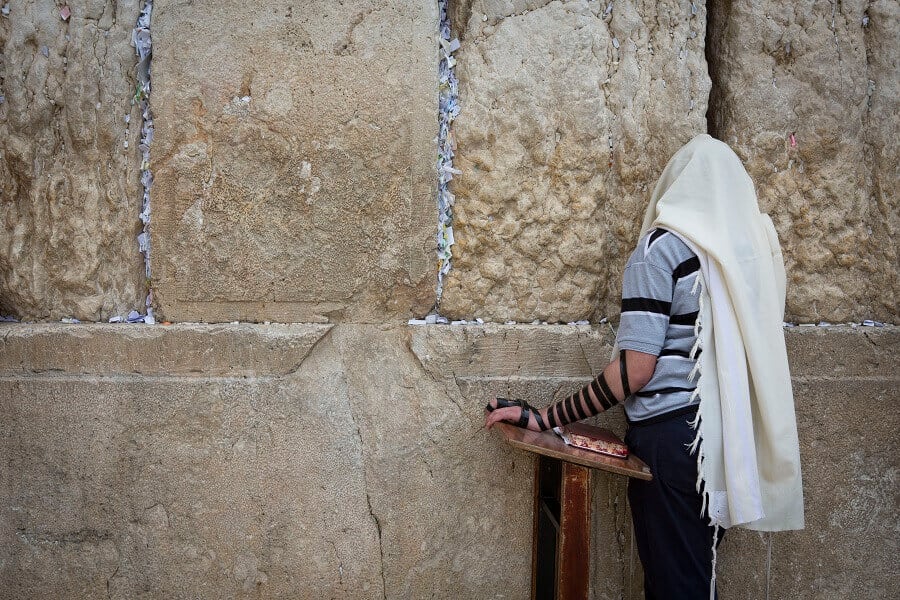
The Wailing Wall, Jerusalem. Photo credit: © Shutterstock
Christian Holy Sites in Jerusalem
Multiple Denominational Holy Sites in Jerusalem
1. Church of the Holy Sepulchre - The place at which Jesus’s crucifixion, burial and resurrection took place, this magnificent ancient church is one of the holiest sites for Christian pilgrims. Erected by Constantine the Great in 326 AD, it contains the tomb of Jesus, the anointing stone and Golgotha itself. It is overseen jointly by the Greek Orthodox, Armenian Apostolic and Roman Catholic according to a complicated ruling named ‘the Status Quo’. Since the 7th century, the Muslim Nusaybah family has been the impartial doorkeeper, using a key made of iron, which is 30 cms long. This enormous structure can hold up to 8.000 people. Its bell tower dates back to the 12th century.
2. Tomb of the Virgin Mary - At the bottom of the Mount of Olives, nestled in the Kidron Valley, Christians from both the Eastern Orthodox and Roman Catholic denominations believe that this is the burial place of Jesus’s mother, Mary.
Catholic (Roman and Eastern) Holy Sites in Jerusalem
3. Church of All Nations - This is thought to be the place at which Jesus prayed before he was arrested by the Romans. Inside you can see gold mosaics, depicting his despair. Its round dome and Corinthian columns let you know this was once a Byzantine structure.
4. Garden of Gethsemane - In Christian history, this garden is loaded with meaning as it is apparently the spot at which he prayed to God before being arrested by the Romans. Gethsemane means ‘olive press’ in Aramaic and the garden has several olive trees. It is located at the foot of the Mount of Olives.
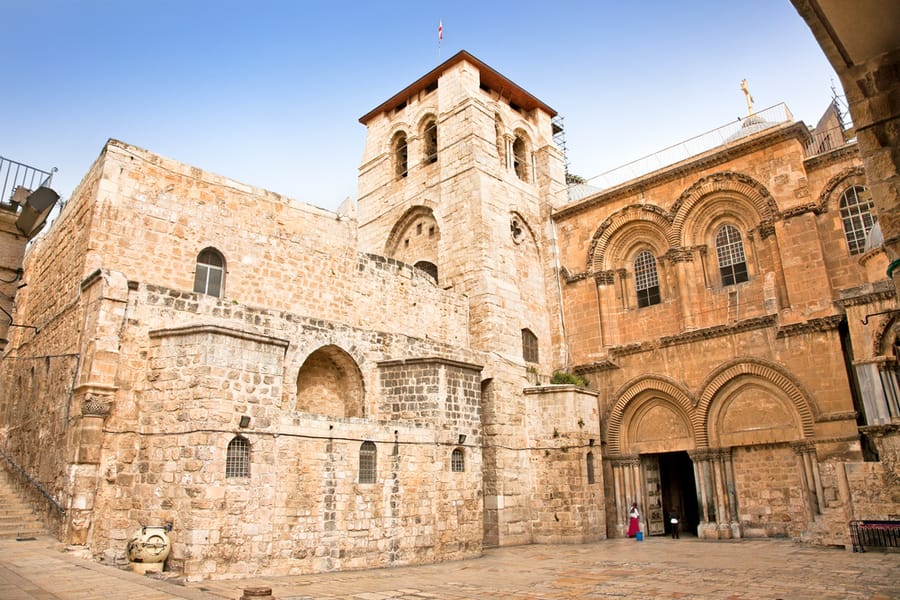
Church of the Holy Sepulchre. Photo credit: © Shutterstock
5. St Anne's Church - Built on the ruins of a Byzantine church, this Crusader-era church is located near the Lion’s Gate. Its thick walls liken it to a fortress and It has a simple interior with an asymmetrical design and cross-vaulted ceilings. Today, it belongs to the French government and is managed by the ‘White Fathers.’6. Church of St. Peter in Gallicantu - This Roman Catholic church can be found just outside the Old City Walls, on the slopes of Mount Zion. In Latin, ‘Gallicantu’ means ‘cock-crow which harks back to the Disciple Peter’s rejection of Jesus (‘before the cock crows’ - Gospel of Mark). Today, visitors can see a golden rooster perched at the top of the sanctuary, reminding them of this biblical passage.
7. Church of the Pater Noster - Dating back to the time of Emperor Constantine, and found on the Mount of Olives, according to tradition this is where Jesus taught his disciples the Lord’s Prayer. ‘Pater Noster’ in Latin means ‘Our Father’ and inside this Carmelite church, that credo is painted on ceramic tiles, in different colours and writing styles, in 130 languages.
8. Dormition Abbey - Situated on Mount Zion, just outside the Old City walls, this distinctive 5th-century Benedictine structure is renowned for its round dome and lovely mosaic floor. Due to its size, it is one of Jerusalem’s most prominent churches; moreover, tradition says that it was on this spot that the Virgin Mary died.
9. Via Dolorosa - In Latin, ‘Via Dolorosa’ means ‘the Way of Sorrows’ and this historic route through the Old City is indeed laden with sorrow, as it commemorates Jesus’s walk towards his crucifixion. Along the way, there are ‘Stations of the Cross’ where he stopped to rest and each Easter, on Good Friday, thousands of Christian pilgrims retrace his steps, culminating at the Church of the Holy Sepulchre. The route is also commemorated each Friday afternoon by the Catholic church.
10. Dominus Flevit Church - This Franciscan church on the Mount of Olives is known for its beautiful window which gives visitors an astonishing view of the Old City. Designed by Antonio Barluzzi, an Italian architect, it is shaped like a teardrop, to symbolise the grief of Christ. Dominus Flevit, in Latin, means ‘ The Lord Wept’.
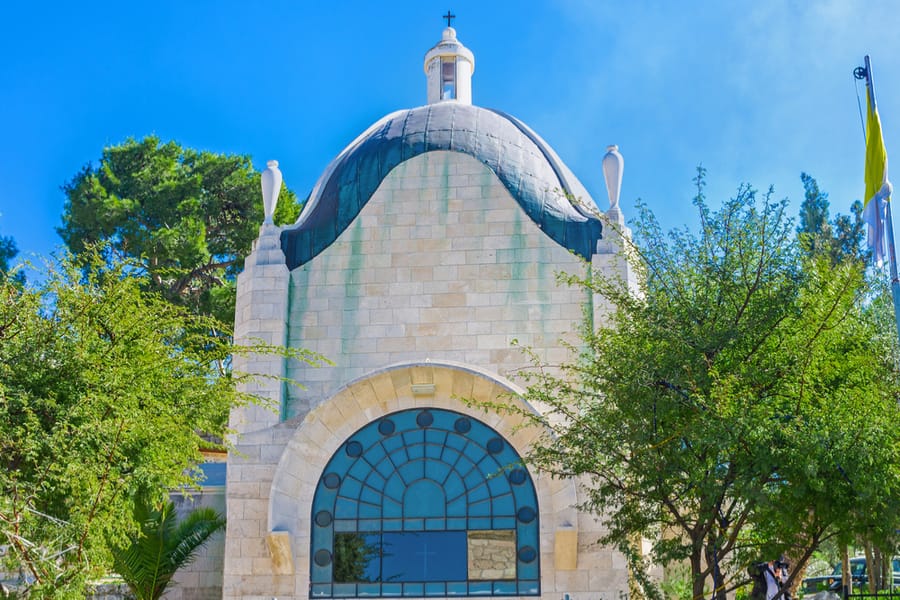
Dominus Flevit Church. Photo credit: © Shutterstock
Orthodox Holy Sites in Jerusalem1. Church of St. Alexander Nevsky - Built over the remains over what is believed to have been the ‘Judgement Gate’ where Jesus passed, en route to his crucifixion, this Russian Orthodox Church was built between 1896-1903 and named after the Russian military leader Nevsky.
2. Convent of the Ascension - located at the highest point of the Mount of Olives, this Byzantine-style church was built in 1870 and has a prominent bell tower and olive groves. Nearby is the Chapel of John the Baptist, with an ancient mosaic floor, commemorating the actual place that his head was found.
3. Cathedral of St. James - This 12th century Armenian Apostolic Church is located inside the Old City and is dedicated to two saints - St. James the Great and St. James the Less. It has an ornate interior decorated with gilded altars, paintings and mosaics.
4. "Deir es-Sultan" - This Coptic Orthodox Monastery is situated on the rooftop of the Helena Chapel in Holy Sepulchre, in the Old City’s Christian Quarter. The site’s heritage is contested by the Ethiopian Church and arguments continue to this day as to which denomination retains ultimate control.
5. Saint Mark’s Monastery - This Syriac Orthodox monastery and church is believed to have been the place where the Last Supper of Christ and his disciples took place. The relics of many saints can be found inside.
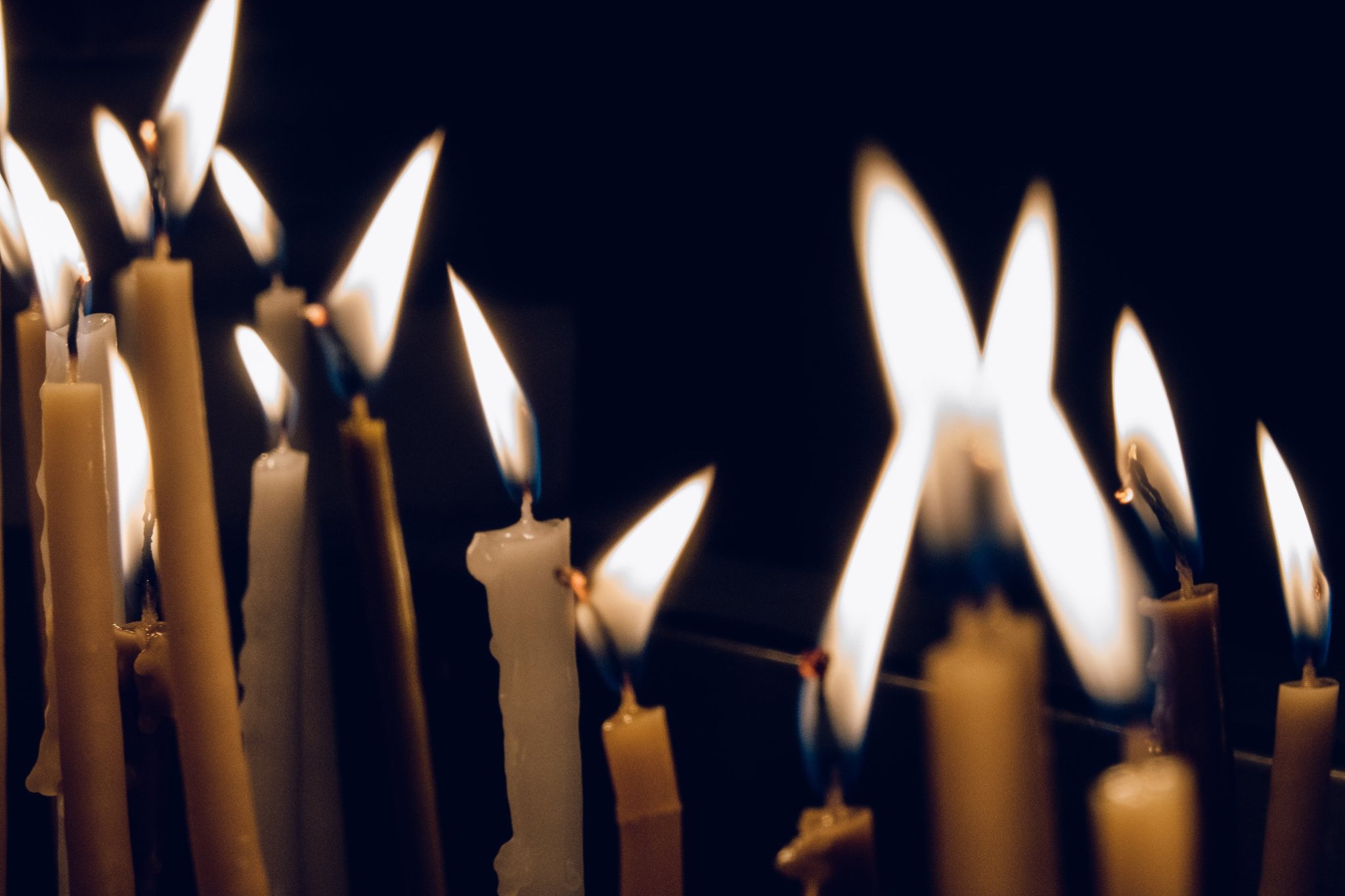
Candles in the Church of the Holy Sepulchre. Photo credit: © Dmitry Mishin
Protestant Holy Sites in Jerusalem
1. The Garden Tomb - This non-denominational site is particularly popular with Anglicans and Evangelicals as a possible location for the crucifixion, burial and resurrection of Jesus. Close to the Damascus Gate, this pretty garden was unearthed in 1867 and holds an empty ancient tomb.
2. Church of the Ascension at the German Augusta Victoria Foundation - This German Evangelical Church stands at the highest point in Jerusalem - almost 850 metres above sea level - and was dedicated in 1910 at the request of Kaiser Wilhelm. Built in the "Wilhelminian-Byzantine style" it contains beautiful ceiling paintings and mosaics.
3. Lutheran Church of the Redeemer - The second Protestant Church in Jerusalem, this German Evangelical Church was built on land given to King William I of Prussia and dedicated on Reformation Day in 1898. It was built in a neo-Romanesque style and has a simple interior.
4. St. George's Cathedral - This Anglican/Episcopal church is located in Sheik Jarrah, East Jerusalem, close to the Garden Tomb, It was built by the fourth bishop of the diocese, George Blyth.
5. St Andrew's, aka the Scottish Church - As part of the Church of Scotland, St. Andrews was built as a memorial to Scottish soldiers killed fighting the Turks in World War I. As well as running a guesthouse (with its famous Scottish breakfast) the Church of Scotland oversees the running of the Tabeetha school in Jaffa and the Scots Hotel in Tiberias.
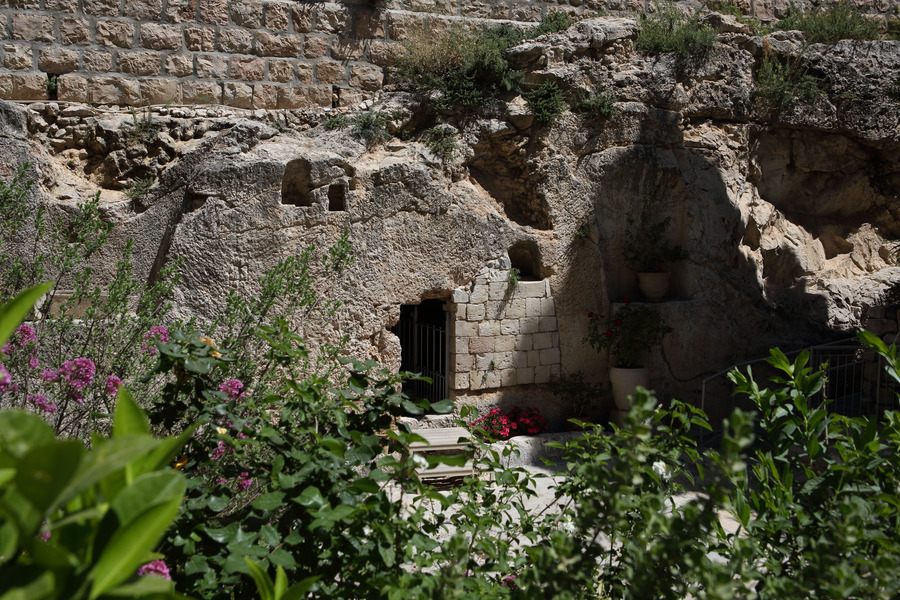
The Garden Tomb. Photo credit: © Dan Porges
Jewish Holy Sites in Jerusalem
1. Tomb of King David - One of the most sacred sites for Jews, the tradition that says King David was buried here dates back to the 9th century. Located on Mount Zion, today it is run on a ‘synagogue model’ with the tombstone in the interior room. There are separate entrances for men and women and the rooftop is an excellent observational point.
2. Mount of Olives Jewish Cemetery - Situated on the Mount of Olives, this noble cemetery is over 500 years old and between 70.0000 and 140,000 people are buried here, including notable Zionist leaders and rabbis. It also contains the tombs of three prophets Haggai, Zechariah and Malachi. Jews come from across the globe to pray and pay respects at this cemetery.
3. Western Wall - The Western Wall (‘Kotel’ in Hebrew) is the last remaining structure of the Second Temple and a place of extraordinary religious, historical and emotional significance to Jews. An open plaza, men and women pray there (in separate sections) and across the world, Jews continue to pray in its direction. Made of huge quarried stone, its structure is smoothed and chiselled.
4. Temple Mount - According to Jewish tradition, this is where previous temples were built and where the Third Temple will, one day, be built. It is the holiest site for Jews who turn this way in prayer. It is also a hotly contested site, between Jews and Muslims and often a flashpoint for outbreaks of violence. Inside is the Foundation Stone, and according to Jewish sages, it was from this rock that the world was created.
5. Cave of the Ramban - Located in the Kidron Valley, this cave is believed by some Jews to be the traditional resting place of Nahmanides (also known as the Ramban) who was a distinguished scholar in the Middle Ages.
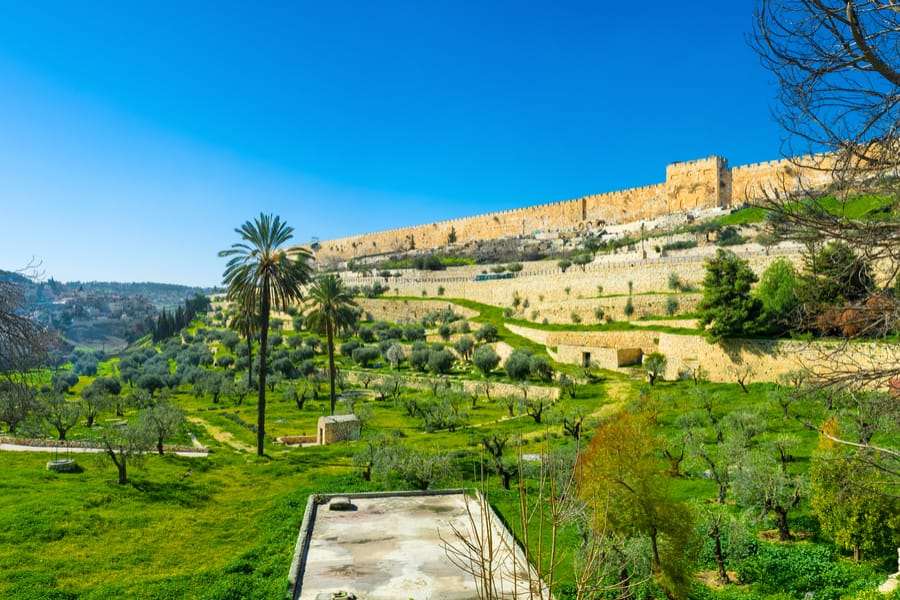
The Kidron Valley, Jerusalem. Photo credit: © Shutterstock
Islamic Holy Sites in Jerusalem
The Arabic name for Jerusalem is 'Al Quds' which means 'the Holy One'. Its holiest shrines include:
1. Haram ash-Sharif - The Temple Mount complex is extremely holy to Muslims, as it is thought to have been the place Mohammed made his ‘Night Journey’ flying over Jerusalem en route to Mecca. It contains the Al-Aqsa Mosque (which is characteristic of early Islamic architecture) the Dome of the Rock (the first Muslim masterpiece, built in 687 CE and is a prominent theme in Islamic Art) and the Well of Souls (Islamic tradition believes that on Judgement day, this is the place that the spirits of the dead will come). It also houses the Dome of the Chain (where the Last Judgement will take pale, with a chain allowing passage only to the righteous and turning away sinners) the Fountain of Qayt Bay - a beautiful structure with stone carvings and intricate calligraphy - and Madrasa al-Ashrafiyya, an Islamic madrasa built in 1480, in Mamluk style.
2. Al-Khanqah al-Salahiyya Mosque - Located in the Christian Quarter of the Old City, this sits on the former sites of the Latin Patriarch. After the Crusaders surrendered to Saladin in 1187, it was transformed into a mosque and a minaret was subsequently built in 1417. The mosque's facade is beautiful and decorated with stones that are a feature of the Mamluk architectural style of that time (a combination of black and white stones).
3. Al-Yaqubi Mosque - Once the Crusader Church of St. James Intercisus, this building was transformed into a mosque after 1187, when Saladin captured the city. Situated close to the Jaffa Gate, this small building is named after Sheik Yaquob al-Ajami - lookout for the lovely enamel name plaque on the wall.
4. Mosque of Omar - Next to the Church of the Holy Sepulchre, in the Christian Quarter, is the Mosque of Omar, which is easily noticed by a 15-metre high minaret. The building was erected to mark the spot where Caliph Omar prayed since he would not enter a Christian church. The mosque was renovated in the 19th century, after an earthquake in 1458.
5. Dome of Ascension - Located close to the Dome of the Rock, this free-standing dome denotes the spot where Mohammed, Islam’s greatest prophet, ascended to heaven. The dome is covered with marble slabs but what makes it really noticeable is that, above it, is a small dome in the shape of a crown. The Dome of Ascension is also part of Mohammed’s ‘Night Journey’ when he flew across the sky, passing Jerusalem, en route to Mecca.
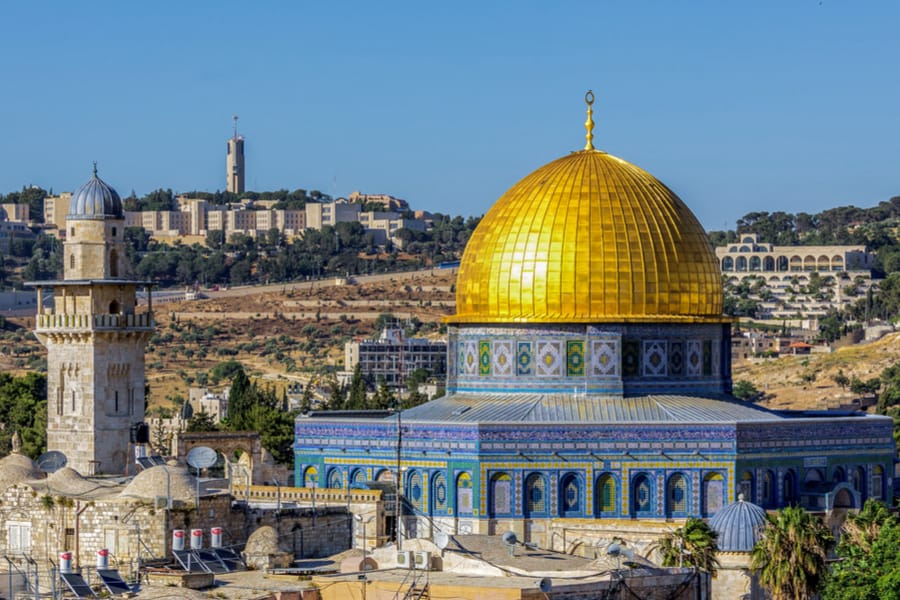
Dome of the Rock, Jerusalem. Photo credit: © Shutterstock
 Login / Register
Login / Register
 Contact Us
Contact Us
 Certificate of Excellence
Certificate of Excellence Guaranteed Departure
Guaranteed Departure Low Prices Guaranteed
Low Prices Guaranteed 24/7 Support
24/7 Support




